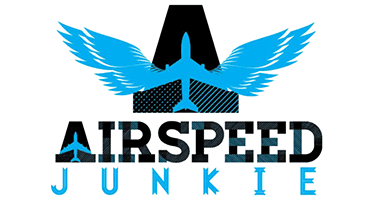Top Aircraft of the US Air Force: A Comprehensive Guide
Last updated: January 7, 2026
The United States Air Force operates a wide range of aircraft, each designed for specific roles such as air superiority, ground attack, and reconnaissance. This guide covers the essential aircraft of the US Air Force, including fighter jets like the F-22 Raptor and bombers like the B-2 Spirit, offering a clear understanding of their capabilities and missions.
Key Takeaways
-
The U.S. Air Force’s fleet includes a diverse array of aircraft across various categories, each designed to fulfill specific roles in maintaining air superiority, strategic bombing, transport, and reconnaissance.
-
Key fighter aircraft such as the F-22 Raptor and F-35 Lightning II provide advanced stealth and versatility, while bombers like the B-2 Spirit and B-52 Stratofortress emphasize strategic capabilities and long-range strike.
-
Transport, aerial refueling, and specialized aircraft like the C-130 Hercules and KC-46 Pegasus enhance operational flexibility and support global missions, while reconnaissance platforms like the RC-135 and U-2 Dragon Lady focus on intelligence gathering.
Fighter Aircraft
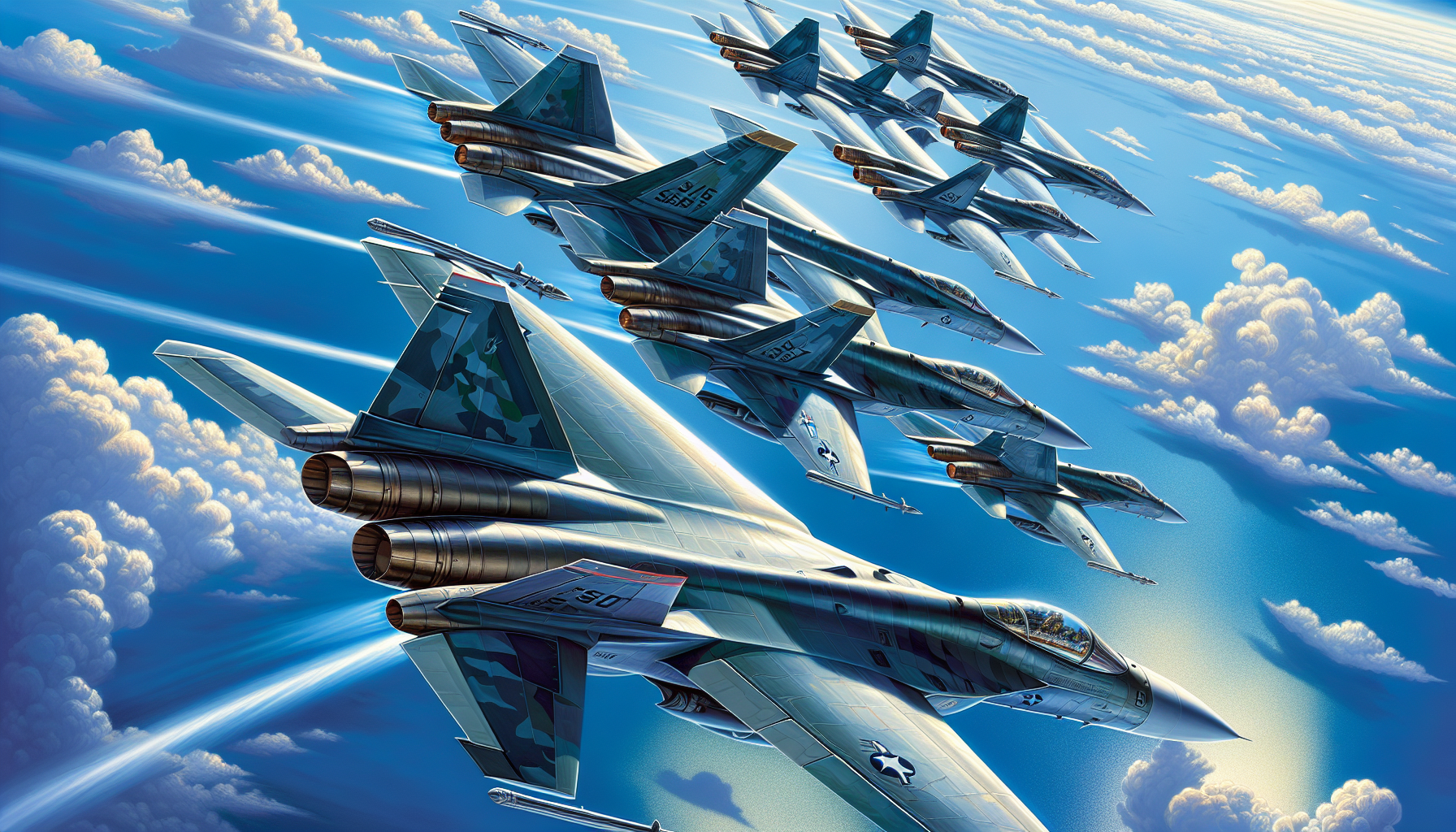
Fighter aircraft are the backbone of any air force, responsible for achieving and maintaining air superiority. The United States Air Force employs a variety of air force aircraft and military aircraft designed for multiple roles, including air superiority and ground attack, ensuring they are prepared for any mission.
As of September 2012, the USAF boasted a formidable fleet of approximately 2,025 fighters, showcasing their commitment to maintaining air dominance with their current aircraft. The legacy of fighter pilots has shaped the culture of the Air Force, evolving from a focus on bombers to the agile and versatile fighter jets we see today.
F-22 Raptor
The F-22 Raptor is a marvel of modern aviation, embodying the principles of stealth and advanced technology. Designed as a fifth-generation fighter aircraft, the F-22 Raptor is built for air dominance, featuring advanced stealth technology that allows it to evade detection by enemy radar systems. This stealth capability is complemented by its advanced avionics, which significantly enhance situational awareness for pilots during combat operations.
These features allow the F-22 Raptor to maintain air superiority over potential threats. Its sophisticated design and capabilities make it indispensable for the United States Air Force, keeping them one step ahead in aerial combat.
F-35 Lightning II
The F-35 Lightning II stands out as a versatile and formidable addition to the United States Air Force’s fleet. This multi-role fighter excels in both air-to-air and air-to-ground missions, highlighting its adaptability in diverse combat situations. The F-35’s advanced avionics and weapons systems give it an edge in air-to-air combat, ensuring it can effectively engage and neutralize enemy aircraft.
The F-35 Lightning II offers precise ground attack capabilities and remains highly responsive to ground forces’ needs. Its stealth features further enhance its effectiveness by reducing radar visibility, establishing it as a critical asset in modern warfare.
F-15 Eagle
The F-15 Eagle has long been a cornerstone of the United States Air Force’s air superiority strategy. Known for its impressive speed and agility, the F-15 Eagle has consistently demonstrated excellent combat performance throughout its service history. Its ability to maintain air superiority makes it a vital component of the USAF’s arsenal.
The F-15 Eagle’s enduring legacy is a testament to its superior design and operational effectiveness, making sure it remains a formidable force in the skies.
Bomber Aircraft
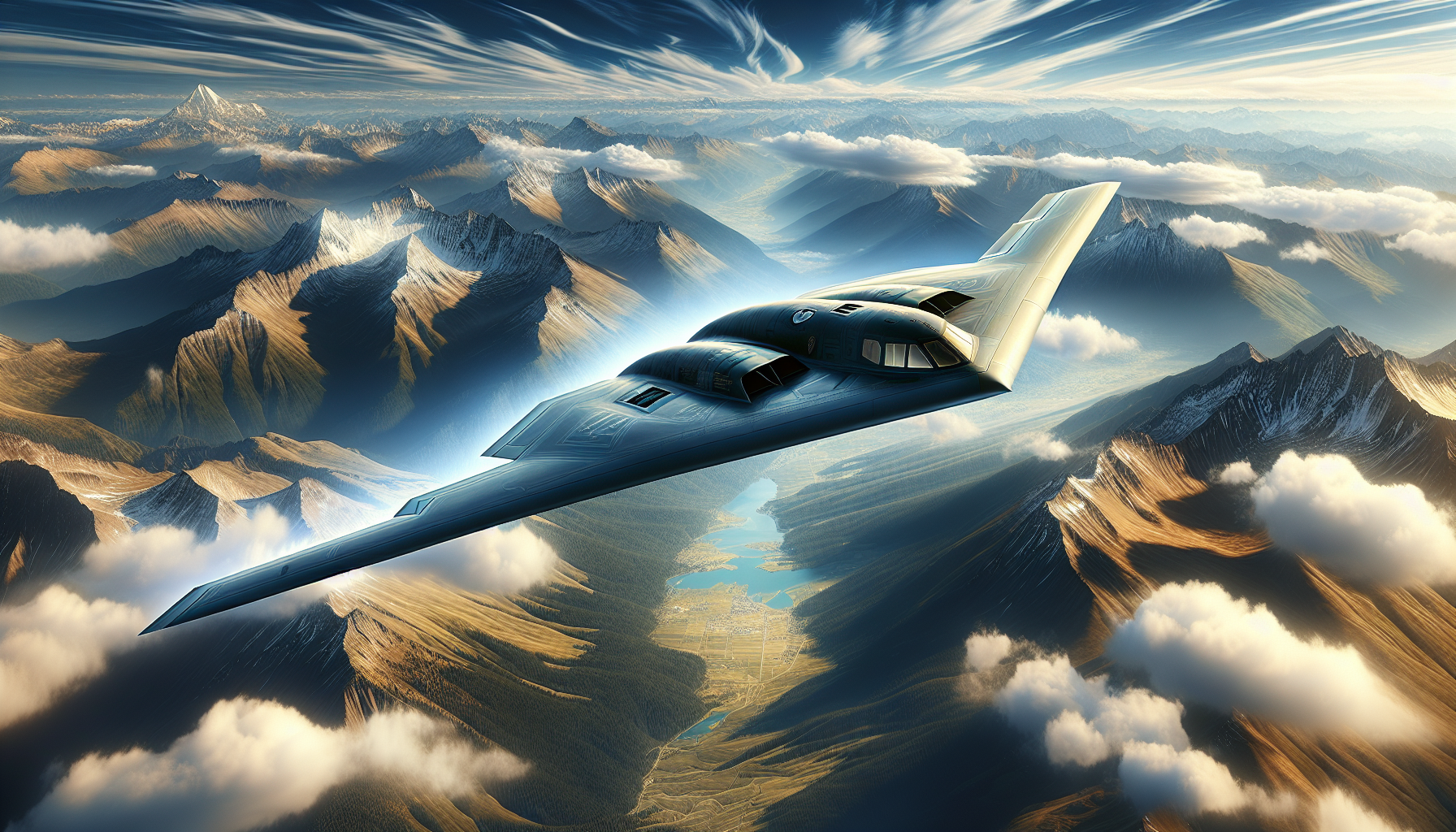
Bomber aircraft play a crucial role in the United States Air Force’s strategic and tactical operations, as they are often coordinated by major commands. These aircraft are capable of engaging in both air-to-air and air-to-ground combat, making them versatile platforms for a variety of missions.
The USAF bomber fleet includes various aircraft designed to fulfill both strategic and tactical roles, allowing adaptation to modern warfare demands.
B-2 Spirit
The B-2 Spirit is a testament to the advancements in stealth technology and long-range strike capabilities. Designed to penetrate dense anti-aircraft defenses, the B-2 Spirit can conduct long-range missions with precision targeting. Its stealth capabilities allow it to evade detection, making it a formidable part of the USAF’s bomber fleet.
Additionally, the B-2 Spirit was the first nuclear platform to integrate agile software development processes, enhancing its mission effectiveness through upgraded communications and weapons systems. The Spirit Realm 1 program further boosts its operational capabilities, keeping it a key asset in Air Force strategic operations in the world.
B-52 Stratofortress
The B-52 Stratofortress has been a stalwart of the United States Air Force for over 60 years, demonstrating its longevity and adaptability. This bomber is recognized for its ability to carry a diverse array of weaponry, including nuclear and precision-guided munitions, increasing its operational versatility.
With an unrefueled combat range surpassing 8,800 miles, the B-52 Stratofortress offers extensive operational flexibility, making it a critical component of the USAF’s strategic bombing capabilities. Its ability to carry a wide variety of weapons ensures it can adapt to various mission requirements, making it both versatile and reliable.
B-1B Lancer
The B-1B Lancer is renowned for its supersonic speed and significant payload capacity, making it highly effective for conventional bombing missions. Its ability to achieve supersonic speeds enhances its effectiveness in strike missions, allowing it to quickly reach and engage targets.
The B-1B Lancer’s payload capacity allows it to deliver a wide array of ordnance, ensuring mission adaptability. This bomber’s combination of speed and payload capacity makes it a formidable force in the United States Air Force’s arsenal.
Transport Aircraft

Transport aircraft are essential for ensuring the fast mobility of troops and equipment, enabling the United States Air Force to respond swiftly to various operational demands. These versatile cargo planes enhance rapid mobility, allowing the USAF to project power and provide support globally.
C-130 Hercules
The C-130 Hercules is a cornerstone of the United States Air Force’s transport capabilities, known for its adaptability in various roles. This versatile aircraft plays a critical role in transporting troops efficiently across various terrains, guaranteeing quick and safe arrival at their destinations.
In addition to its troop transport capabilities, the C-130 Hercules is equipped for critical medical evacuation missions, capable of transitioning quickly from cargo transport to a medical evacuation setup. Its cargo delivery capabilities ensure that vital supplies reach their destinations quickly and effectively, making it an indispensable asset in the USAF’s fleet.
C-17 Globemaster III
The C-17 Globemaster III excels in both strategic and tactical airlift roles, enabling the rapid deployment of forces to both main operating bases and forward deployment areas. With a maximum payload of 170,900 pounds, the C-17 can transport heavy cargo and perform tactical airlift missions, allowing the USAF to quickly meet various operational demands.
C-5 Galaxy
The C-5 Galaxy stands out for its immense cargo capacity, facilitating intercontinental transport operations. As the largest aircraft in the USAF inventory, the C-5 Galaxy can transport oversized cargo across global distances, allowing the USAF to project power and support wherever needed.
Helicopter Aircraft
Helicopter aircraft bring unparalleled flexibility to military operations, bridging gaps that fixed-wing aircraft simply can’t manage. Their unique ability to take off and land vertically, hover in place, and maneuver in tight spaces makes them essential for a range of missions, from rescue operations to rapid troop deployment.
CV-22 Osprey
The CV-22 Osprey stands out as a tiltrotor aircraft that combines the advantages of a helicopter with those of a turboprop airplane. This hybrid approach allows for vertical takeoff and landing as well as efficient high-speed flight over long distances. In practical terms, the CV-22 is a specialist at inserting and extracting teams deep behind enemy lines—getting personnel in and out of remote or hostile locations that are otherwise inaccessible.
HH-60G Pave Hawk
The HH-60G Pave Hawk is engineered for personnel recovery, excelling in challenging, high-risk environments. Whether it’s day or night, the Pave Hawk is ready to fly into hostile territory to rescue isolated personnel. Its suite of rescue-specific technology and defensive systems ensures crews can perform critical recoveries even under adversarial conditions, highlighting its value in lifesaving missions.
UH-1N Huey
Versatility is the name of the game with the UH-1N Huey. This light-lift utility helicopter is a proven performer, supporting everything from securing convoys transporting sensitive materials to emergency airlifts of security forces. The Huey’s adaptability has also made it a familiar sight during high-profile visits and for surveillance missions, ensuring safe transit for distinguished visitors and providing vital overwatch where it’s needed most.
Aerial Refueling Aircraft
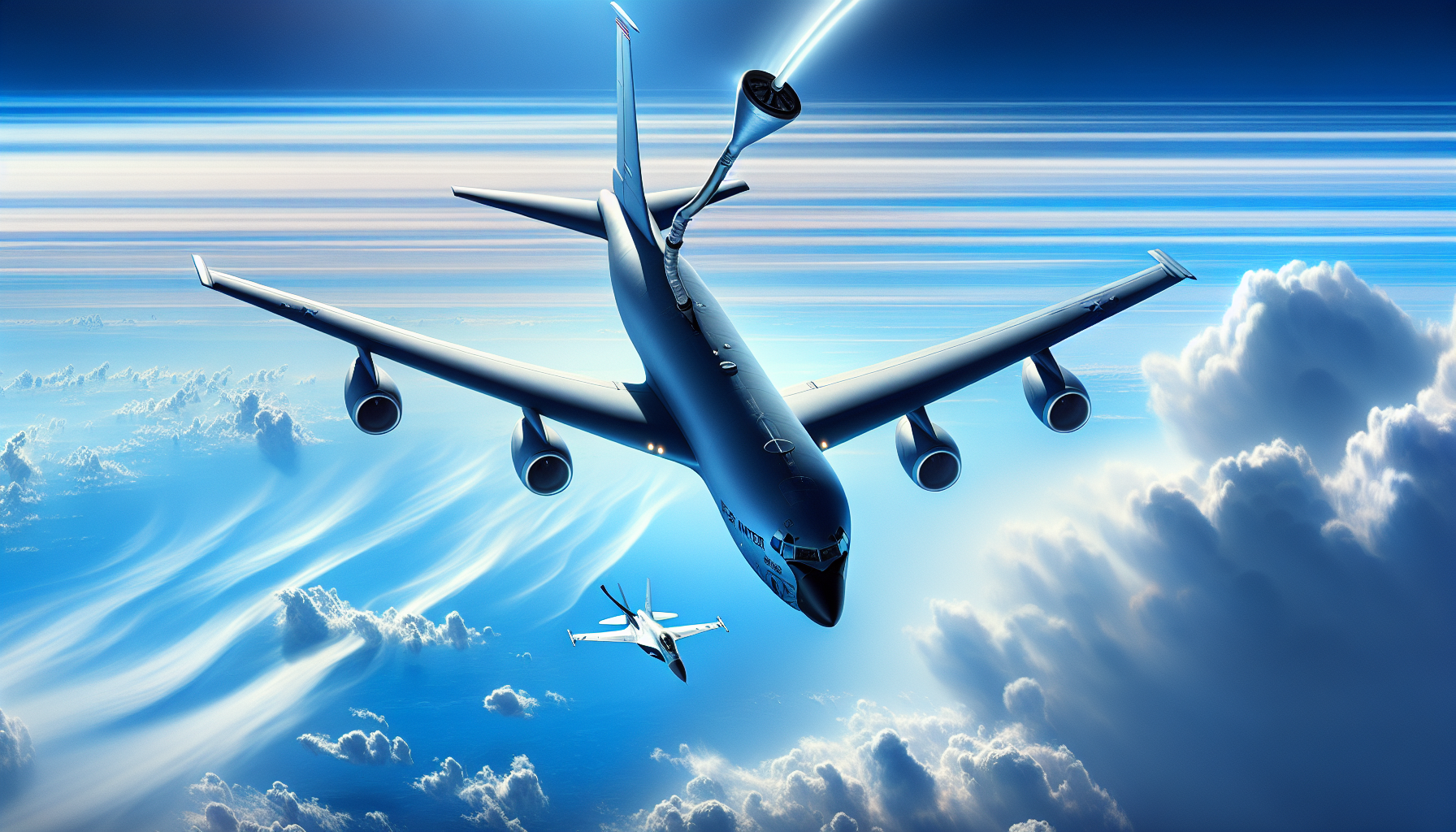
Aerial refueling aircraft play a critical role in extending the range and presence of the United States Air Force, acting as force multipliers that enhance overall combat effectiveness. These aircraft allow fighter jets, bombers, and others to stay airborne longer, increasing operational flexibility and reach.
Modern Tanker Aircraft: Enhancing Global Mobility
Modern aerial refueling aircraft have dramatically improved the global mobility and operational support for air missions across the United States Air Force and its partners. Designed with versatility in mind, today’s tankers extend the reach of combat, transport, and reconnaissance planes, enabling sustained missions over vast distances without the need to land for fuel.
Key advancements in these aircraft include:
- Greater Refueling Capacity: Equipped with advanced fuel delivery systems, modern tankers can refuel multiple aircraft within a single sortie, supporting diverse missions for the Air Force, Navy, Marine Corps, and allied nations.
- Multi-Role Functionality: Many of today’s tankers can transition seamlessly between aerial refueling, cargo transport, and aeromedical evacuation, ensuring that supplies, personnel, and critical patients can be moved wherever and whenever needed.
- Extended Range and Efficiency: By empowering strike and support aircraft to remain airborne longer, tanker fleets greatly increase the operational flexibility of military forces, allowing them to rapidly respond to emerging situations worldwide.
These capabilities make modern tanker aircraft indispensable assets, reinforcing the USAF’s doctrine of global reach and ensuring mission success, whether projecting power, providing humanitarian assistance, or supporting allied air operations.
KC-135 Stratotanker
The KC-135 Stratotanker has been a fundamental asset of the United States Air Force for over six decades, primarily providing aerial refueling support for various military branches. Its introduction in the 1950s significantly enhanced the USAF’s capabilities, allowing aircraft to remain airborne for extended missions.
KC-10 Extender
The KC-10 Extender is designed for both aerial refueling and cargo transport, enhancing the versatility of the USAF’s operational capabilities. This dual-purpose aircraft maximizes its utility in various missions, allowing the USAF to respond quickly and effectively to diverse demands.
KC-46 Pegasus
Deliveries of the KC-46 Pegasus to USAF units began in 2019, introducing advanced refueling technology that improves efficiency and mission effectiveness. The KC-46 features modern refueling systems, including automated capabilities and improved crew comfort, making it a valuable fleet addition.
Reconnaissance and Surveillance Aircraft
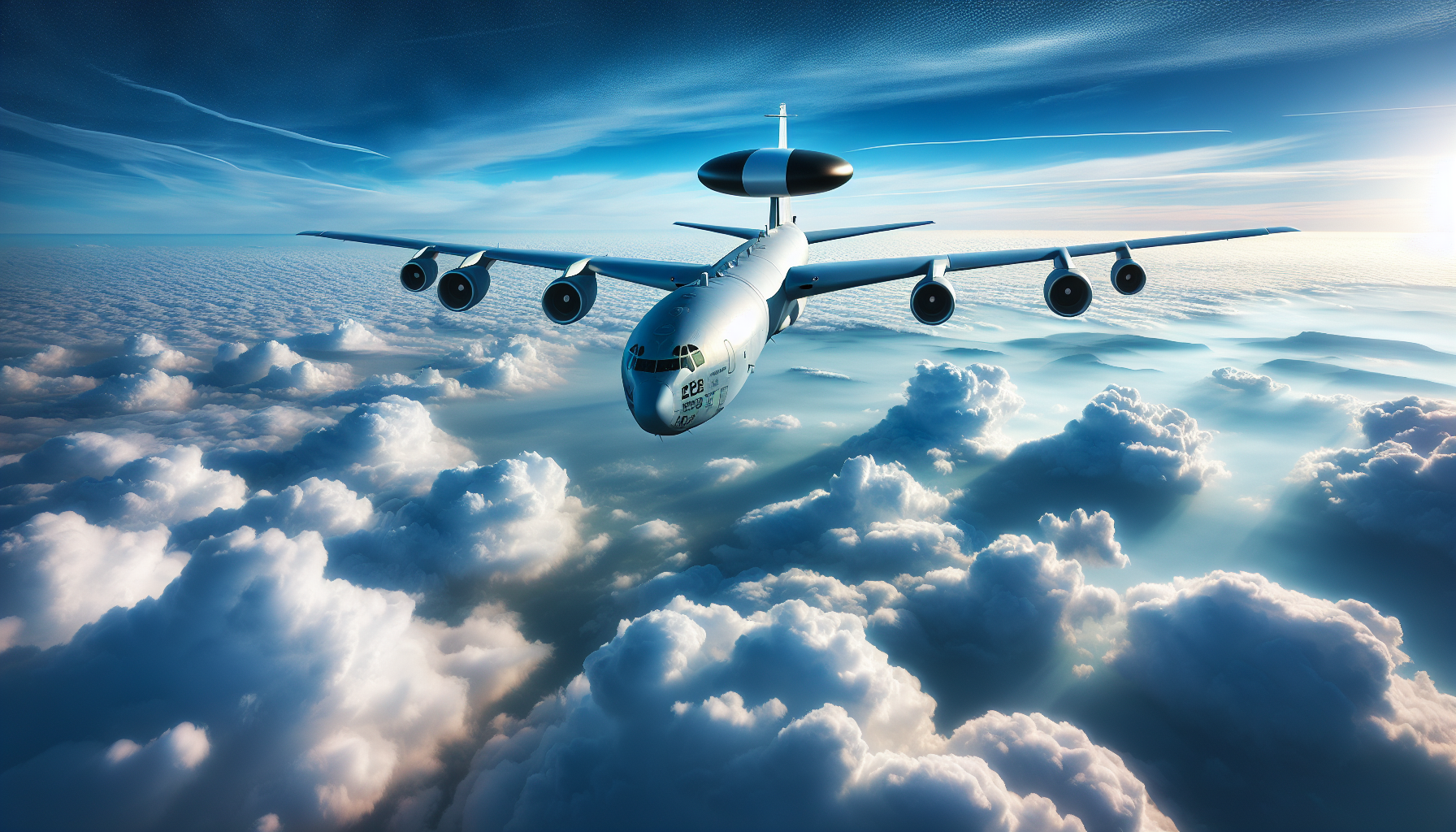
Reconnaissance and surveillance aircraft are crucial for gathering intelligence and conducting operations in modern warfare. The RC-135 family, for instance, plays a critical role in offering near real-time intelligence and reconnaissance support for military operations.
RC-135 Rivet Joint
The RC-135 Rivet Joint, originally developed in 1961, is primarily designed for electronic surveillance, replacing older reconnaissance platforms. This aircraft has been involved in every U.S. conflict since its introduction, demonstrating its versatility and importance in military intelligence operations.
E-3 Sentry (AWACS)
The E-3 Sentry (AWACS) is a crucial asset for airborne command and control operations. Equipped with an advanced radar system, the E-3 Sentry can detect and track airborne targets, providing real-time situational awareness and command and control support to joint air operations. This radar system can track over 600 targets simultaneously, making the E-3 an indispensable platform for extensive surveillance capabilities over land and sea.
The E-3 Sentry’s 30-foot diameter rotating radar dome further supports its extensive surveillance capabilities, ensuring that the USAF can effectively monitor and manage airspace during complex operations.
MQ-9 Reaper
The MQ-9 Reaper is a versatile unmanned aerial vehicle (UAV) that excels in intelligence, surveillance, and reconnaissance (ISR) roles. It features capabilities for both remote piloting and precision strikes with various onboard munitions. The MQ-9 is capable of carrying out precision strikes and has a long endurance, allowing it to loiter over target areas for extended periods.
This UAV’s ability to engage targets with precision and provide extensive ISR capabilities makes it a critical asset in modern combat missions, ensuring that the USAF can conduct effective operations with minimal risk to personnel.
Distinguishing Capabilities of Key UAV Models
Unmanned aerial vehicles (UAVs) form a pivotal component of modern aerial operations, each model purpose-built for specialized missions.
MQ-1B Predator
The MQ-1B Predator is renowned for its role as an armed, multi-mission UAV. Operating at medium altitudes and offering long endurance, the Predator excels in gathering actionable intelligence while also being capable of engaging dynamic targets when circumstances demand. Its sensor suite enables persistent surveillance, and its ability to carry precision-guided munitions adds flexibility to both tactical and strategic missions.
RQ-4 Global Hawk
Providing a leap forward in intelligence, surveillance, and reconnaissance (ISR), the RQ-4 Global Hawk is optimized for high-altitude, long-endurance missions. Unlike lower-flying platforms, the Global Hawk can survey vast areas across continents in a single flight, delivering comprehensive, real-time imagery and data—regardless of weather or time of day. This makes it indispensable for broad-area surveillance and strategic overwatch.
Together, these UAVs extend operational reach, reduce risk to personnel, and ensure that decision-makers have the intelligence needed for both timely action and long-term planning.
Special Operations Aircraft
Special operations aircraft provide specialized airpower for global missions, supporting the unique requirements of the Air Force Special Operations Command (AFSOC) established in 1990. Designed for diverse missions, these aircraft range from close air support to long-range infiltration and exfiltration of special operations forces.
AC-130 Ghostrider
The AC-130J Ghostrider is a modern replacement for older AC-130U/W models, featuring advanced digital avionics. This aircraft is designed for close air support and can conduct armed reconnaissance missions, making it a vital asset for special operations. The AC-130J is utilized for specific close air support missions. These missions include troops in contact, convoy escort, and point air defense.
Air interdiction missions focus on targeting either preplanned or opportunistic targets. This includes activities such as strike coordination and reconnaissance. The AC-130J Ghostrider’s base model is the C-130J, and it features an advanced two-pilot flight station, allowing effective support for a wide range of missions.
Specialized Attack Aircraft: Design and Combat Role
Specialized attack aircraft are purpose-built to deliver effective firepower in close coordination with ground forces. The A-10C Thunderbolt II is a prime example, engineered with a rugged airframe and a heavy emphasis on survivability to support troops under fire. Its simple yet robust design allows it to operate in austere conditions and engage a variety of ground targets, including heavily armored vehicles and tanks. The A-10C's powerful GAU-8/A Avenger cannon and advanced targeting systems make it exceptionally effective for close air support missions—allowing pilots to identify, engage, and destroy threats while working in tandem with ground units.
Similarly, the AC-130J Ghostrider represents a sophisticated evolution in dedicated close air support platforms. Built on the proven C-130J airframe and outfitted with state-of-the-art digital avionics, the Ghostrider is equipped for high-precision engagement. Its onboard systems include advanced sensors, a fully integrated cockpit for a two-pilot crew, and a diverse arsenal capable of providing persistent fire support in dynamic and challenging combat environments.
Together, these specialized attack aircraft are not only designed to withstand the rigors of combat but also to deliver timely, accurate responses to protect and empower ground forces during critical operations.
CV-22 Osprey
The CV-22 Osprey is a tiltrotor aircraft that combines the vertical takeoff and landing capabilities of a helicopter with the speed and range of a fixed-wing aircraft. This unique design allows the CV-22 to perform long-range infiltration and exfiltration missions for special operations forces, allowing quick and efficient reach and extraction from hostile environments.
The CV-22’s tiltrotor design enables it to take off and land vertically, providing unparalleled operational flexibility for a variety of missions.
Helicopter Aircraft
Military helicopters are designed to offer unmatched versatility, adapting to a wide array of missions thanks to their ability to operate in challenging environments where fixed-wing aircraft might struggle. From rapid personnel recovery to secure transport and close air support, each helicopter brings its own set of unique features to the Air Force’s toolkit.
HH-60G Pave Hawk
The HH-60G Pave Hawk stands out for its focus on personnel recovery, excelling in demanding rescue missions—especially in hostile or unpredictable areas. Equipped with advanced avionics and defensive systems, the Pave Hawk can conduct both day and night operations, rescuing isolated personnel under fire or during natural disasters. Think of it as the military version of your neighborhood’s emergency response team, just with night vision, armor, and a winch for daring extractions.
UH-1N Huey
A staple of American aviation for decades, the UH-1N Huey remains a reliable light-lift utility helicopter. Its primary duties include airlifting emergency security teams, supporting the security and surveillance of sensitive assets (like those convoys transporting high-value cargo), and shuttling distinguished visitors. Its legacy of adaptability ensures that, whether it’s ferrying a general or responding to a base emergency, the Huey can handle the call.
Together, these helicopters form an essential part of the Air Force’s ability to respond quickly, whether in the thick of conflict, during a crisis, or for everyday support tasks—often serving as the bridge between the battlefield and safety.
Training Aircraft
Training aircraft are essential for equipping USAF pilots and crew members with the foundational flying skills necessary for advanced flight training. Designed to prepare pilots for diverse operations, these aircraft ready them for the demands of modern military aviation.
T-6 Texan II
The T-6 Texan II is integral to the Joint Primary Pilot Training program, training students in basic flying techniques. Designed for primary pilot training, the T-6 Texan II focuses on essential flying skills for both Air Force and Navy aviators, featuring advanced avionics systems that significantly enhance the training experience.
T-38 Talon
The T-38 Talon is utilized for advanced jet pilot training, featuring exceptional speed and maneuverability suited for high-performance instruction. Its high performance and agility make it suitable for advanced training, preparing pilots well for modern jet aircraft demands.
TG Trainer Gliders
TG trainer gliders are primarily used for cadet flying training, focusing on the development of essential flying skills through glider flight. These gliders emphasize basic flying techniques and foundational piloting skills, giving cadets hands-on experience crucial for their development as pilots.
VIP and Executive Transport Aircraft
The U.S. Air Force’s VIP transport fleet includes specialized aircraft designed to safely and comfortably transport high-ranking officials. These aircraft ensure secure and efficient VIP travel, including the President, Vice President, and senior officials.
VC-25A (Air Force One)
The VC-25A, commonly known as Air Force One, is a modified Boeing 747-200B specifically tailored for presidential air transport. This aircraft features advanced communication systems that allow the president to conduct business while airborne, allowing continuous leadership and command.
Equipped with extensive security measures, including a defensive countermeasure system to protect against missile threats, the VC-25A is heavily modified to provide a high level of security for presidential transport.
C-32
The C-32, derived from the Boeing 757, is designated for transporting high-ranking officials, including the Vice President and cabinet members. Serving as the official transport for the Vice President, the C-32 is designated with the call sign ‘Air Force Two’ and is equipped with modern amenities for enhanced comfort during flights.
C-40 Clipper
The C-40 Clipper, based on the Boeing 737, is specifically reserved for transporting cabinet members and congressional officials. Known for its adaptability in executive transport, the C-40 can be configured for all-passenger, all-cargo, or a mixed mission profile, allowing for versatile operational use.
Weather and Atmospheric Research Aircraft
Weather reconnaissance aircraft play a crucial role in studying meteorological events like hurricanes and typhoons. These aircraft are equipped with advanced sensors and systems to gather crucial meteorological data, ensuring accurate weather forecasting and research.
WC-130J
The WC-130J is an advanced weather reconnaissance aircraft used by the U.S. Air Force for hurricane reconnaissance. Equipped to penetrate the eye of hurricanes, the WC-130J provides critical data on the storm’s intensity and structure, flying low through the storm to gather data that improves forecasting models.
U-2 Dragon Lady
The U-2 Dragon Lady is known for its ability to perform high-altitude reconnaissance missions and gather atmospheric data. Operating at altitudes exceeding 70,000 feet, the U-2 can collect intelligence from above weather systems, using sophisticated sensors to capture detailed imagery and data for various atmospheric research purposes.
Experimental and Space Test Aircraft
Experimental military aircraft serve as the Air Force’s high-tech proving ground, pushing the boundaries of space and flight. Their objectives typically center on evaluating emerging aerospace technologies, developing next-generation materials, and fine-tuning unmanned operations—all in the relentless pursuit of greater reliability and performance.
One such example is the orbiting test vehicles that act as reusable platforms for space technology experimentation. These aircraft boast features such as automated operation, advanced heat-shield materials tested by commercial innovators like SpaceX and Lockheed Martin, and the ability to return safely to Earth after extended missions in orbit. Critically, their modular payload bays allow for a rotating cast of experimental equipment—from satellite deployment mechanisms to new communication systems.
By recovering and analyzing equipment post-mission, engineers glean invaluable insight for future aerospace projects. In short, experimental military aircraft embody the Air Force’s drive to innovate, ensuring American capabilities stay ahead of the ever-evolving frontier of aerospace technology.
Summary
In summary, the United States Air Force’s diverse fleet of aircraft plays a critical role in maintaining national security and air superiority. From the stealthy F-22 Raptor to the versatile C-130 Hercules, each aircraft serves a unique purpose, contributing to the overall effectiveness of the Air Force. The bombers, transport planes, aerial refuelers, reconnaissance aircraft, special operations platforms, training aircraft, VIP transports, and weather research aircraft all work together to ensure that the USAF can respond swiftly and effectively to any threat or mission requirement.
These aircraft are not just machines; they are symbols of the dedication and ingenuity of the airmen who fly and maintain them. The continuous evolution and enhancement of these aircraft ensure that the United States Air Force remains a dominant force in the skies, ready to protect and serve our nation.
As we look to the future, the advancements in aviation technology and the commitment of our airmen will continue to drive the success of the United States Air Force. The sky is not the limit; it is just the beginning.
Frequently Asked Questions
What makes the F-22 Raptor a superior fighter aircraft?
The F-22 Raptor stands out as a superior fighter aircraft due to its advanced stealth technology, exceptional avionics, and unmatched speed and agility, which collectively ensure air dominance and enhanced situational awareness for its pilots.
How does the B-52 Stratofortress maintain its operational flexibility?
The B-52 Stratofortress maintains its operational flexibility by carrying a wide range of weaponry, including nuclear and precision-guided munitions, and achieving an impressive unrefueled combat range of over 8,800 miles. This combination allows it to adapt to various mission requirements effectively.
What roles does the C-130 Hercules perform in the USAF?
The C-130 Hercules is a versatile aircraft in the USAF, conducting troop transport, medical evacuation, and cargo delivery missions. Its adaptability makes it essential for various operations.
How does the KC-46 Pegasus improve aerial refueling operations?
The KC-46 Pegasus significantly improves aerial refueling operations through its advanced automated refueling technology and enhanced crew comfort, resulting in greater efficiency and mission flexibility.
What is the significance of the U-2 Dragon Lady in reconnaissance missions?
The U-2 Dragon Lady is crucial for high-altitude reconnaissance, as it collects vital atmospheric data and intelligence using advanced sensors, enhancing situational awareness and strategic planning. Its capabilities make it an indispensable asset in military operations.
